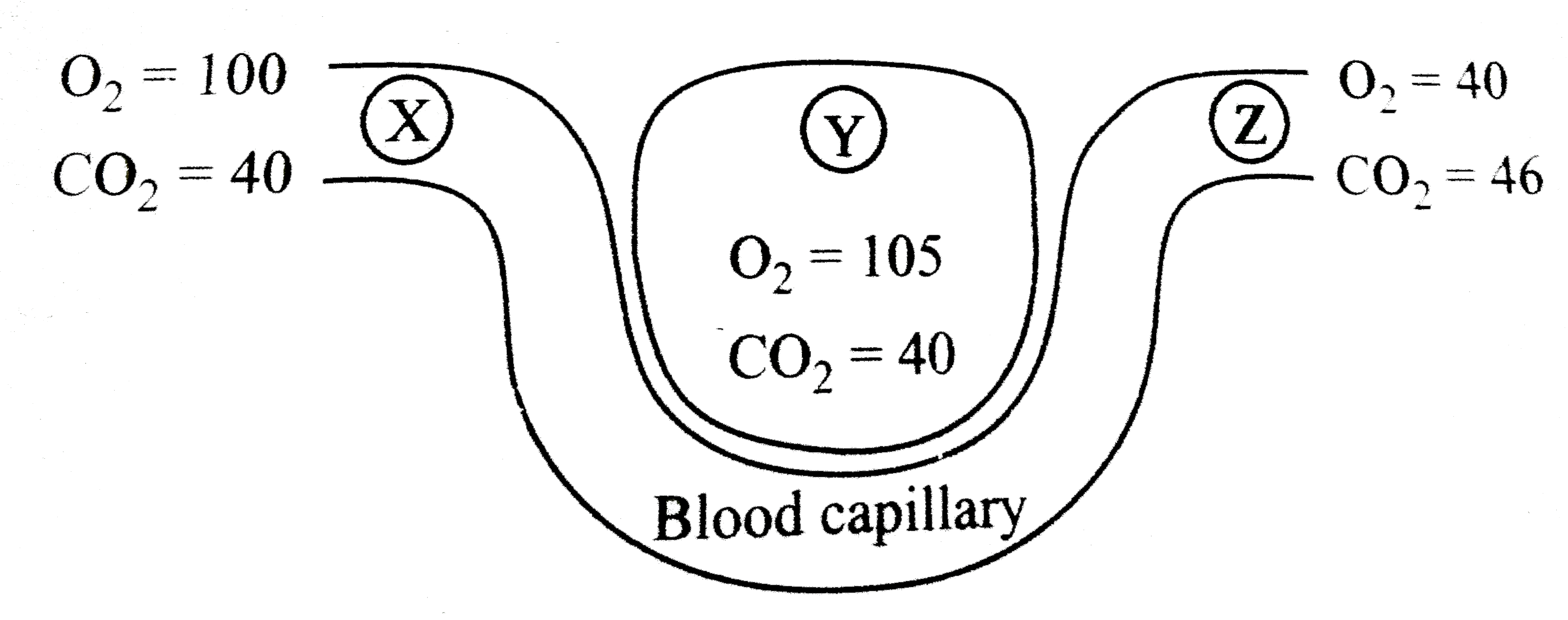How do substances like carbon dioxide (CO2) and water (H2O) move in and out of the cell?
To answer the question of how substances like carbon dioxide (CO₂) and water (H₂O) move in and out of the cell, we can break down the process into several steps:
1. Understanding Movement of Substances: The movement of substances in and out of cells occurs through two main processes: diffusion and osmosis.
2. Diffusion:
- Diffusion is the process by which substances move from an area of higher concentration to an area of lower concentration.
- For carbon dioxide (CO₂), if the concentration of CO₂ is higher outside the cell compared to inside, CO₂ will diffuse into the cell. Conversely, if the concentration of CO₂ is higher inside the cell, it will diffuse out into the environment.
3. Osmosis:
- Osmosis specifically refers to the movement of water molecules through a semi-permeable membrane.
- Water moves from an area of higher water concentration (or lower solute concentration) to an area of lower water concentration (or higher solute concentration).
- If the concentration of water is higher inside the cell than outside, water will move out of the cell. If the concentration is higher outside, water will move into the cell.
4. Semi-Permeable Membrane:
- Both diffusion and osmosis occur across a semi-permeable membrane, which allows certain molecules to pass while restricting others.
- This selective permeability is crucial for maintaining the appropriate concentrations of substances inside and outside the cell.
5. Concentration Gradient:
- The movement of both CO₂ and H₂O is driven by the concentration gradient, which is the difference in concentration of a substance between two areas.
- Substances naturally move from areas of high concentration to areas of low concentration until equilibrium is reached.
Summary:
- Carbon Dioxide (CO₂): Moves in and out of the cell by diffusion, depending on the concentration gradient.
- Water (H₂O): Moves in and out of the cell by osmosis, also depending on the concentration gradient.
- Diffusion is the process by which substances move from an area of higher concentration to an area of lower concentration.
- For carbon dioxide (CO₂), if the concentration of CO₂ is higher outside the cell compared to inside, CO₂ will diffuse into the cell. Conversely, if the concentration of CO₂ is higher inside the cell, it will diffuse out into the environment.
- Osmosis specifically refers to the movement of water molecules through a semi-permeable membrane.
- Water moves from an area of higher water concentration (or lower solute concentration) to an area of lower water concentration (or higher solute concentration).
- If the concentration of water is higher inside the cell than outside, water will move out of the cell. If the concentration is higher outside, water will move into the cell.
- Both diffusion and osmosis occur across a semi-permeable membrane, which allows certain molecules to pass while restricting others.
- This selective permeability is crucial for maintaining the appropriate concentrations of substances inside and outside the cell.
- The movement of both CO₂ and H₂O is driven by the concentration gradient, which is the difference in concentration of a substance between two areas.
- Substances naturally move from areas of high concentration to areas of low concentration until equilibrium is reached.
- Carbon Dioxide (CO₂): Moves in and out of the cell by diffusion, depending on the concentration gradient.
- Water (H₂O): Moves in and out of the cell by osmosis, also depending on the concentration gradient.
Topper's Solved these Questions
- BOOK - NCERT EXEMPLAR ENGLISHCHAPTER - THE FUNDAMENTAL UNIT OF LIFE EXERCISE - Long Answer Type Questions7videos
THE FUNDAMENTAL UNIT OF LIFE
- BOOK - NCERT EXEMPLAR ENGLISHCHAPTER - THE FUNDAMENTAL UNIT OF LIFE EXERCISE - Long Answer Type Questions7videos
THE FUNDAMENTAL UNIT OF LIFE
- BOOK - NCERT EXEMPLAR ENGLISHCHAPTER - NATURAL RESOURCES EXERCISE - Long Answer Type Questions7videos
NATURAL RESOURCES
- BOOK - NCERT EXEMPLAR ENGLISHCHAPTER - TISSUESEXERCISE - Long answer9videos
TISSUES
Similar Questions
Knowledge Check
- Question 1 - Select One
The given diagram shows a blood capillary in close contact with structure Y. The relative concentration (in units) of carbon dioxide (CO2) and oxygen (O2) are given at three different sites.

Which of the following statements is correct ?Aa) Y is an alveolus and blood flow is from X to ZBb) Y is an alveolus and blood flow is Z to XCc) Y is a muscle and blood flow is from X to ZDd) Y is a muscle and blood flow is from Z to X - Question 2 - Select One
The enzyme that increases the reaction rate between CO2 and H2O in red blood cell is
Acarbonic anhydraseBadenylate cyclaseCcarbonic synthetaseDalkaline phosphatase.
Bulk of carbon dioxide (CO2) released from body tissues into the blood is present as
View SolutionBulk of carbon dioxide (CO2) released from body tissues into the blood is present as
View SolutionC––O2+H2O→H2CO3
View SolutionHow are gases like O2andCO2 exchanged in our body ?
View SolutionBoth carbon monoxide (CO) and carbon dioxide (CO2) are binary compounds of carbon and oxygen. Show by calculations that both the compounds contain different percentages of the two elements. [R.A.M.: C = 12, O = 16.]
View Solution0.290 g of an organic compound containing C, H and O gave on combustion 0.270 g of water and 0.66 g of CO2. What is empirical formula of the compound.
View Solution

